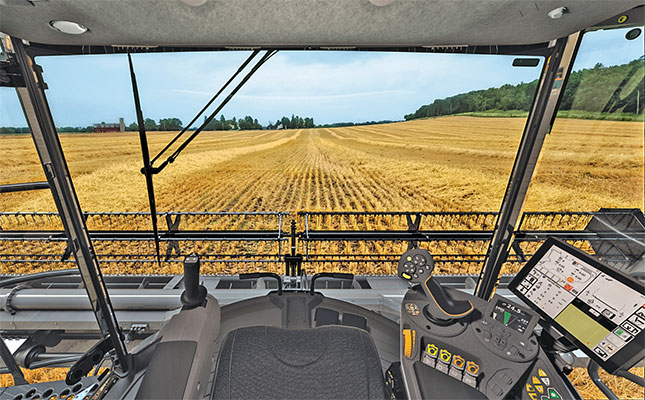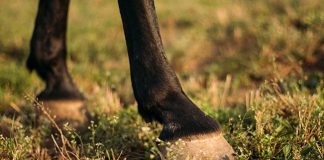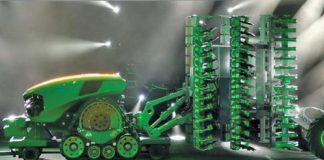
Photo: AGCO
AGCO Corporation (AGCO) introduced the Fendt IDEALDrive steering system to North American producers during the 2020 Commodity Classic, which took place in San Antonio, Texas in February.
According to a statement issued by AGCO, the IDEALDrive is the first joystick steering system on a combine harvester from a major manufacturer. It gives the operator an unobstructed, end-to-end view of the combine header for less stress and fatigue during the long hours harvesting, the company says.
“Time is of the essence when harvesting, and operating a combine for long hours day after day can take a toll on the combine operator,” says Zach Stejskal, product specialist at AGCO.
“IDEALDrive takes away a lot of the physical stress and reduces fatigue, because the operator can see the entire header feeding, and control everything from a comfortable position in the cab.”
Fingertip control
With IDEALDrive, the left hand steers the combine by moving the joystick left or right. Force feedback guides how far to move the joystick for the desired effect. The IDEALDrive joystick responds quickly and precisely to the operator’s hand movements, allowing accurate steering with less body movement.
“The joystick turns a headland 180° turn into light work,” Stejskal says.
Because IDEALDrive steering is so responsive, a slight movement of the hand is all that is needed to make a steering adjustment when operating in the field, improving harvesting efficiency.
The AGCO statement cites studies that shows that productivity increased 6% with the IDEALDrive joystick versus conventional steering systems, while operator steering workload decreased 65%. The comparison is based on the time it took drivers to complete a circuit on a simulated track with IDEALDrive versus conventional steering.
The statement adds that controls typically found on the steering wheel or steering column are now on the joystick at the operator’s fingertips.
For easy access, control buttons on the top of the steering joystick operate turn signals in road mode and row-finder lights in field mode; buttons on the back are for dim and high-beam lights, the horn and track guidance. Steering sensitivity adjusts based on the speed of the machine to optimise the operator’s control.
Better visibility
With nothing in front of the operator but brake pedals and foot pegs, there is a clear view of the entire combine head, especially the centre of the header where the crop enters the feeder house.
This clear view helps ensure the crop is flowing smoothly into the machine for optimum productivity and grain quality. In addition, the wide-open view makes it easier to see and avoid obstacles in the field or on the road, reducing the potential for machine damage and improving safety.
Both left- and right-hand controls are within easy reach and are designed with operator comfort in mind, according to AGCO.
The seat can be adjusted forward or back as needed, so the operator can sit in an upright and relaxed position, without having to lean forward to steer or to see over a steering wheel and column. Foot pegs provide a comfortable place for the operator’s feet to rest.
Finally, joystick steering with IDEALDrive reduces the muscle activity required for steering and is easier on the operator’s wrists, forearms, shoulders and back. Better visibility also means less eye strain, says AGCO.











